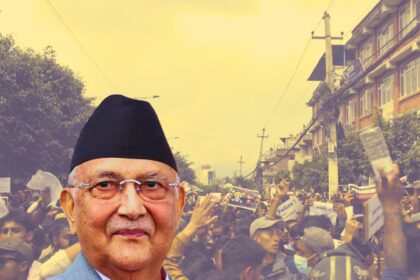Over 4 Million Flee Sudan Since War Began, Says UN — Humanitarian Crisis Deepens in 2025
Sudan’s Humanitarian Crisis: Over Four Million Displaced Amid Escalating Conflict
Introduction
Sudan is enduring one of the most severe humanitarian crises in recent global history. Since April 2023, the country has been embroiled in a brutal conflict between the Sudanese Armed Forces and the paramilitary Rapid Support Forces (RSF). This war has resulted in widespread devastation, tens of thousands of deaths, and the displacement of millions. According to the United Nations High Commissioner for Refugees (UNHCR), over four million people have fled Sudan, seeking refuge primarily in neighboring countries. The UN has termed this an alarming “devastating milestone,” underscoring the urgent need for international action to address grave human rights abuses and provide humanitarian assistance.
This report provides a detailed overview of the ongoing conflict, displacement trends, the humanitarian emergency in host countries—particularly Chad—and the international community’s role in responding to this crisis. It also explores the political and military dimensions of the conflict and highlights the urgent challenges faced by displaced populations.
Background: Origins and Nature of the Conflict
Sudan, Africa’s third-largest country before the secession of South Sudan in 2011, has a long history of internal conflicts and political instability. The current conflict erupted in April 2023 following a power struggle between the Sudanese Armed Forces (SAF), led by General Abdel Fattah al-Burhan, and the Rapid Support Forces (RSF), commanded by Mohamed Hamdan Dagalo, also known as Hemeti.
The RSF originated as a militia group involved in counterinsurgency operations, including campaigns in Darfur during the early 2000s, often accused of committing severe human rights abuses. Following the ousting of former President Omar al-Bashir in 2019, a fragile transitional government was established, aiming to move Sudan towards democratic civilian rule. However, tensions between the SAF and RSF escalated, culminating in violent clashes and an open armed conflict in 2023.
The conflict quickly intensified, spreading across multiple regions including Khartoum, Darfur, and South Kordofan, fragmenting the country politically and geographically. The SAF controls most of the country’s center, east, and north, while the RSF and allied militias dominate Darfur and parts of the south. The fighting has resulted in widespread destruction of infrastructure, civilian casualties, and disruption of essential services.
Scale of Displacement: The Largest Global Refugee Crisis
As of mid-2025, UNHCR estimates that over four million Sudanese have fled their homes, making this one of the largest displacement crises worldwide. These displaced individuals include refugees, asylum seekers, and returnees who had previously been displaced themselves.
Refugee Movements and Host Countries
- Egypt: The largest number of Sudanese refugees, approximately 1.5 million, have sought safety in Egypt. The shared border and existing Sudanese diaspora have made Egypt a primary refuge despite limited resources to accommodate the influx.
- South Sudan: Hosting more than 1.1 million Sudanese refugees, South Sudan is significantly impacted despite its own challenges as a fragile, post-conflict nation. Notably, about 800,000 of these refugees are returnees who had previously fled to Sudan during earlier conflicts.
- Chad: Eastern Chad has seen the number of Sudanese refugees rise dramatically, now exceeding 1.2 million from a pre-conflict population of around 400,000 refugees. The surge in arrivals has severely strained Chad’s humanitarian infrastructure.
The ongoing conflict and resulting mass displacement represent not only a national catastrophe but a regional crisis with implications for stability, security, and development in the Sahel and Horn of Africa.
Humanitarian Situation in Eastern Chad: A Deepening Crisis
Context and Challenges
Eastern Chad has become a critical frontline in the Sudanese refugee crisis. The region, already hosting a large Sudanese refugee population before 2023, is now overwhelmed by a tripling of arrivals since the conflict’s outbreak.
Dossou Patrice Ahouansou, the UNHCR Principal Situation Coordinator in Chad, has repeatedly highlighted the unsustainable pressure on local services and humanitarian operations. From the UNHCR base in Amdjarass, he reports a daily average of approximately 1,400 refugees crossing into the Wadi Fira and Ennedi Est provinces over recent weeks.
Conditions for Refugees
Refugees fleeing Sudan face harrowing circumstances:
- Many cross the border under active gunfire, navigating armed checkpoints controlled by various militias and paramilitary groups.
- They are subjected to extortion, violence, and tight restrictions on movement imposed by armed actors, compounding their vulnerability.
- Shelter conditions in Chad remain precarious, with many refugees living in makeshift tents and inadequate housing exposed to extreme weather conditions.
- Basic necessities such as clean water, food, healthcare, and sanitation are critically insufficient, exacerbated by the rapid influx and limited funding.
Funding and Operational Constraints
UNHCR and partner organizations are struggling to scale their operations. Mr. Ahouansou emphasizes that the emergency response is dangerously underfunded, limiting the capacity to provide essential life-saving assistance. Without significant increases in international financial support, efforts to mitigate the crisis’s human cost will remain insufficient.
The Human Rights Dimension: Urgent International Action Needed
The UNHCR has issued urgent calls for the international community to acknowledge the severe human rights abuses endured by civilians caught in the Sudanese conflict. Widespread reports have documented atrocities including extrajudicial killings, sexual violence, forced displacement, and attacks on humanitarian workers and infrastructure.
UNHCR spokesperson Eujin Byun, speaking from Geneva, described the crisis as “the world’s most damaging displacement crisis,” underscoring the devastating human toll of the conflict. She warned that if the fighting continues, the number of displaced persons will only increase, with profound implications for regional and global stability.
The international response remains fragmented, with political challenges limiting coordinated action to pressure parties to the conflict to cease hostilities and allow humanitarian access.
Political and Military Fragmentation of Sudan
The ongoing war has effectively bifurcated Sudan:
- Government-Controlled Areas: The Sudanese Armed Forces maintain control over the central regions including Khartoum, the eastern provinces, and parts of the north.
- RSF and Allied Areas: The Rapid Support Forces and their allied militias command nearly all of Darfur and parts of the southern regions.
This division complicates efforts to provide aid and resolve the conflict. Negotiations have stalled repeatedly, and ceasefire agreements have been fragile or short-lived.
Regional and Global Implications
Sudan’s crisis is not isolated. The massive displacement threatens regional stability:
- Neighboring countries are overwhelmed by refugee inflows, placing strain on fragile economies and infrastructure.
- Increased population movements heighten risks of cross-border insecurity, including the spread of armed groups and trafficking networks.
- The humanitarian burden demands a coordinated international response to prevent further destabilization.
Conclusion: The Path Forward
The Sudanese conflict and resulting humanitarian catastrophe demand urgent, coordinated international attention. Addressing the grave human rights abuses, escalating displacement, and urgent humanitarian needs requires:
- Immediate ceasefire and political negotiations to end hostilities.
- Substantial increases in humanitarian funding to support refugees and host communities.
- Enhanced diplomatic pressure on conflict actors to ensure protection of civilians.
- Strengthened regional cooperation to manage displacement and stability.
The world stands at a critical juncture: failure to act decisively risks prolonging suffering and destabilizing an already volatile region.
Would you like me to continue with expanded sections on:
Forecasting possible scenarios and recommendations for the international community
Detailed historical context and Sudan’s political landscape pre-2023
In-depth profiles of refugee experiences and humanitarian response operations
Analysis of international diplomatic efforts and geopolitical stakes
Sector-wise breakdown of humanitarian needs: food security, health, shelter, water/sanitation
Profiles of impact on specific host countries (Egypt, South Sudan, Chad, Ethiopia)
Humanitarian Response and Operational Challenges
The scale and complexity of Sudan’s displacement crisis have posed significant challenges to humanitarian organizations operating in the region. Agencies such as the UNHCR, International Organization for Migration (IOM), World Food Programme (WFP), Médecins Sans Frontières (MSF), and numerous non-governmental organizations (NGOs) have mobilized to provide assistance. Yet, they face numerous operational hurdles.
Access and Security Constraints
The volatile security environment severely restricts humanitarian access to vulnerable populations inside Sudan. Both the Sudanese Armed Forces and RSF have been accused of obstructing aid delivery in contested areas. Roads, airports, and supply routes are frequently targeted or become inaccessible due to ongoing fighting. This limits the ability of agencies to deliver food, medical supplies, and shelter materials to displaced persons trapped within conflict zones.
In Darfur and South Kordofan, where fighting has been particularly intense, humanitarian workers face constant threats, including kidnappings, harassment, and attacks. This insecurity undermines the capacity of humanitarian organizations to conduct assessments, distribute aid, and provide protection services.
Funding Shortfalls and Resource Gaps
Despite the growing needs, humanitarian funding remains inadequate. The 2025 Sudan Crisis Response Plan (CRP) called for over $1.7 billion in international aid to address urgent needs, but only around 45% of the requested funds have been pledged or received. This shortfall hampers critical interventions including food distributions, water and sanitation projects, shelter construction, and healthcare provision.
Mr. Dossou Patrice Ahouansou of UNHCR has repeatedly emphasized the “dangerously underfunded” state of the emergency response in eastern Chad, where the influx of Sudanese refugees has overwhelmed existing infrastructure and resources.
The lack of funding also limits the capacity to deploy sufficient personnel and equipment. Overstretched staff face burnout and challenges in scaling up operations quickly enough to meet the rapidly escalating crisis.
Coordination Challenges
Coordination among humanitarian actors, host governments, and local communities is essential for an effective response. However, overlapping mandates, bureaucratic hurdles, and competing priorities often complicate efforts. Coordination platforms such as the UN-led Sudan Humanitarian Country Team and regional refugee response groups strive to harmonize planning and resource allocation, but gaps remain.
Political tensions and distrust between the conflicting parties in Sudan further complicate humanitarian negotiations for access and protection. Ensuring the neutrality and independence of aid operations is critical but increasingly difficult.

Refugee Experiences: Human Stories Behind the Numbers
While statistics provide an overview of displacement, the lived experiences of refugees reveal the profound human cost of the conflict.
Journey to Safety: Perilous Flight
Thousands of Sudanese refugees undertake dangerous journeys to escape violence and persecution. Many flee their homes with only what they can carry, traveling on foot for days or weeks to reach border crossings.
According to testimonies collected by humanitarian organizations, refugees describe:
- Exposure to active combat zones, including shelling and aerial bombardments.
- Encounters with armed checkpoints where they face harassment, extortion, or violence.
- Separation from family members and loss of livelihoods.
- Traumatizing experiences of witnessing killings, sexual violence, and destruction of communities.
Women and children, often the most vulnerable, are disproportionately affected, facing risks of exploitation, abuse, and lack of access to essential services.
Life in Refugee Camps and Host Communities
Upon arrival in host countries such as Chad, Egypt, and South Sudan, refugees confront new challenges. Refugee camps, often established rapidly to handle large influxes, provide only rudimentary shelter and limited services.
Conditions reported include:
- Overcrowding in camps, leading to increased risks of disease transmission.
- Insufficient clean water and sanitation facilities, exacerbating public health risks.
- Limited access to education and livelihoods, especially for children and young adults.
- Psychological trauma and lack of mental health support.
In many cases, refugees depend heavily on humanitarian assistance for food, medical care, and shelter materials. Protracted displacement strains social cohesion both within refugee communities and between refugees and local populations.
Impact on Host Countries: A Regional Humanitarian Challenge
The massive displacement from Sudan is exerting enormous pressure on neighboring countries, many of which already face their own economic and social difficulties.
Chad: Frontline of the Crisis
Chad bears one of the heaviest burdens. With over 1.2 million Sudanese refugees now residing in its eastern provinces, the country’s limited infrastructure and fragile security situation are being stretched to the breaking point.
Chad’s government has generally maintained an open border policy and cooperated with international agencies. However, the sheer volume of arrivals presents several challenges:
- Straining health and education systems, particularly in rural and underserved areas.
- Competition for scarce natural resources such as water and arable land, leading to tensions between refugees and host communities.
- Increased insecurity risks due to the presence of armed groups and cross-border smuggling networks.
Humanitarian organizations continue to call for enhanced funding and support to sustain operations in Chad and help integrate refugees more effectively.
Egypt: Complex Dynamics
Egypt, with approximately 1.5 million Sudanese refugees, faces a complex political and social environment. The longstanding Sudanese diaspora in Egypt has both facilitated refuge but also complicated integration.
Egypt’s authorities have adopted varying policies on Sudanese asylum seekers, balancing security concerns with humanitarian obligations. Many refugees reside in urban areas rather than camps, which poses challenges for delivering targeted assistance and protection services.
The protracted nature of displacement means that many Sudanese face uncertain futures, with limited access to formal employment, education, and health services. NGOs and UN agencies are working to expand support programs, but resource constraints and legal barriers remain significant obstacles.
South Sudan: A Fragile Host
South Sudan’s situation is complicated by its own post-conflict recovery and humanitarian needs. Hosting over 1.1 million Sudanese refugees, including many returnees, South Sudan grapples with:
- Limited infrastructure and resources to accommodate large numbers of new arrivals.
- Challenges in providing adequate shelter, food, and health services.
- Risks of conflict spillover and insecurity along border areas.
Despite these difficulties, South Sudanese authorities and humanitarian partners continue efforts to provide protection and assistance, viewing refugee hosting as a regional responsibility.
Political Implications and Prospects for Resolution
The ongoing conflict and humanitarian crisis in Sudan have significant political implications regionally and internationally.
Stalemate and Fragmentation
The military conflict between SAF and RSF has so far defied resolution. Numerous ceasefire attempts have failed, with both sides maintaining entrenched positions. The division of territorial control has effectively partitioned the country, undermining national governance and complicating peace efforts.
The breakdown of the transitional government and absence of a unified civilian authority exacerbate political instability. This fragmentation hampers efforts to coordinate humanitarian response and delays any meaningful political dialogue.
Regional and International Involvement
Regional actors such as the African Union (AU), Intergovernmental Authority on Development (IGAD), and neighboring states have engaged in mediation efforts, though progress remains limited.
The United Nations and international partners continue to advocate for a ceasefire, political negotiations, and respect for human rights. Sanctions and diplomatic pressure have been employed selectively, but consensus on robust action is elusive.
The protracted conflict risks becoming a “frozen conflict,” prolonging human suffering and destabilizing a volatile region critical for international security and economic interests.
Sectoral Humanitarian Needs
Food Security and Nutrition
The conflict has severely disrupted agricultural production, markets, and food supply chains in Sudan. Widespread displacement has further reduced access to land and livelihoods.
The World Food Programme reports that millions face acute food insecurity, with malnutrition rates soaring among children and vulnerable populations.
Food assistance remains a top priority, but funding shortfalls limit distributions. Nutrition programs targeting children under five and pregnant or lactating women are essential to prevent irreversible health impacts.
Health Care
Health infrastructure has been severely damaged or abandoned in many conflict zones. Hospitals and clinics are understaffed and lack medicines and equipment.
The risk of outbreaks of infectious diseases such as cholera, malaria, and measles is heightened by poor sanitation and crowded living conditions.
Mental health needs are often overlooked despite widespread trauma and psychological distress.
Shelter and Non-Food Items
Many displaced persons live in overcrowded camps or informal settlements with inadequate shelter. Protection from extreme weather and privacy concerns are ongoing challenges.
Provision of essential non-food items such as blankets, cooking utensils, and hygiene kits is vital but constrained by logistics and funding.
Water, Sanitation, and Hygiene (WASH)
Access to safe drinking water and sanitation facilities is limited, contributing to disease transmission and suffering.
WASH interventions are critical to reduce health risks but require sustained funding and coordination.
Recommendations for the International Community
To effectively address Sudan’s humanitarian crisis and its broader implications, the international community should prioritize:
- Immediate Ceasefire: Pressure conflict parties to cease hostilities and enable unhindered humanitarian access.
- Increased Funding: Mobilize substantial additional resources for emergency response and refugee support, particularly in frontline host countries.
- Protection of Civilians: Demand respect for human rights and protection of vulnerable populations, including humanitarian workers.
- Regional Cooperation: Support regional mechanisms to manage displacement and promote peace and stability.
- Long-Term Solutions: Invest in peacebuilding, governance reforms, and development initiatives to address root causes.
Conclusion
Sudan’s conflict and the resulting displacement of over four million people represent one of the most urgent humanitarian emergencies of the decade. The war has devastated communities, fractured the nation, and overwhelmed neighboring countries. Without urgent international action, millions will continue to suffer in precarious conditions, and regional stability will be jeopardized.
A coordinated global response that combines humanitarian aid, diplomatic engagement, and sustained development efforts is imperative to mitigate the crisis and pave the way toward peace and recovery for Sudan and its people.
Also Read : Maharashtra Adds 4th CAP Round for 2025 Engineering Admissions to Reduce Costly Private College Burden








